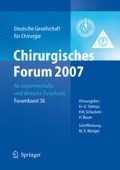Abstract
Introduction: The presence of scattered tumor cells at the invasion front of several carcinomas has clinical significance. These cells differ in their protein expression from cells in central tumor regions as shown by us for the EGF- seven transmembrane (TM7) receptor CD97 [1]. We recently clarified the mechanism by which CD97 in scattered tumor cells facilitates tumor invasion and showed that the short CD97 isoform (EGF 1,2,5/TM7) increased random intrinsic migration of tumor cells [2]. Here, we elucidated the molecular mechanisms involved in CD97 stimulated tumor cell migration. Methods: Cells stable overexpressing the whole CD97 (EGF 1,2,5/TM7) molecule, C-terminally truncated CD97 (TM5, TM3, and TM1) as well as CD97 missing the extracellular EGF-domains (delta EGF/TM7) were generated. The cells were applied to migration tracking experiments and laser scanning microscopy to investigate the surface cell distribution of CD97. Moreover, microarray analysis and pulldown-assays were used to define intracellular signaling during migration. Results: In non-confluent 2D cultured CD97 overexpressing cells, the molecule was concentrated in membrane ruffles at the leading edge of migrating cells, co-localized with the raft marker ganglioside GM1, actin filaments and α-actinin. Treatment that disrupts actin filaments but not microtubules caused loss of CD97 from the ruffles, suggesting an interaction with the actin cytoskeleton in the localization and function of CD97. Eliminating the N-terminal EGF-domains of CD97 diminished migration but did not interrupt it. However, step-wise truncation of CD97 at the C-terminus to TM5 and TM3 decreased random migration. CD97 with only one transmembrane domain (TM1) did not migrate indicating intracellular signaling through the TM7 part during migration. Pull-down assays, microarray analysis and real-time RT-PCR revealed the involvement of the small Rho and Rac GTPases and LIM-kinase 1 in coupling CD97 to actin cytoskeleton formation and thus migration. Conclusion: Malignant cells utilize their intrinsic migratory ability to invade and to metastasize. CD97, upregulated in scattered invasive tumor cells, links migratory signals to the actin cytoskeleton.
Access this chapter
Tax calculation will be finalised at checkout
Purchases are for personal use only
Literatur
Steinert M, Wobus M, Boltze C, Schütz A, Wahlbuhl M, Hamann J, Aust G (2002) Expression and regulation of CD97 in colorectal carcinoma cell lines and tumor tissues. Am J Pathol 161: 1657–1667
Galle J, Sittig D, Hanisch I, Wobus M, Wandel E, Loeffler M, Aust G (2006) Individual cell — based models of tumor — environment interactions. Multiple effects of CD97 on tumor invasion. Am J Pathol 169: 1802–1811
Author information
Authors and Affiliations
Editor information
Editors and Affiliations
Rights and permissions
Copyright information
© 2007 Springer Medizin Verlag Heidelberg
About this paper
Cite this paper
Aust, G., Sittig, D., Wandel, E., Wobus, M., Galle, J. (2007). Der Zelloberflächenrezeptor CD97 stimuliert die Migration von Tumorzellen durch Interaktion mit dem Aktin-Zytoskelett. In: Steinau, H.U., Schackert, H.K., Bauer, H. (eds) Chirurgisches Forum 2007. Deutsche Gesellschaft für Chirurgie, vol 36. Springer, Berlin, Heidelberg. https://doi.org/10.1007/978-3-540-71123-0_26
Download citation
DOI: https://doi.org/10.1007/978-3-540-71123-0_26
Publisher Name: Springer, Berlin, Heidelberg
Print ISBN: 978-3-540-71122-3
Online ISBN: 978-3-540-71123-0
eBook Packages: Medicine (German Language)

